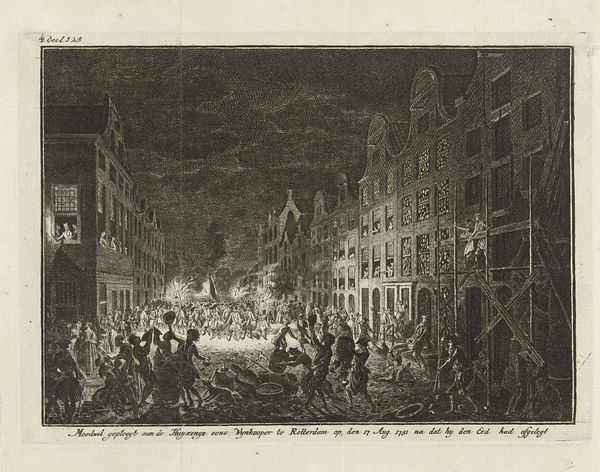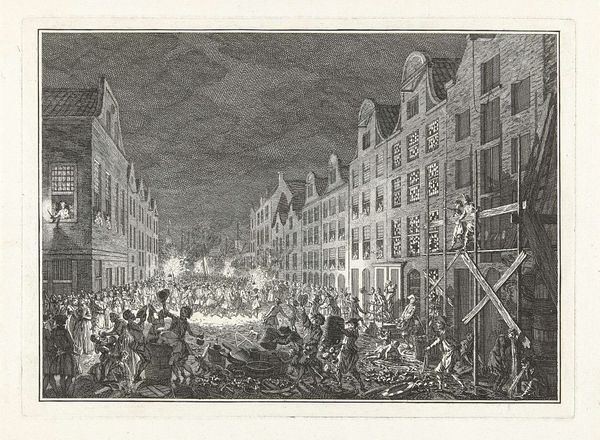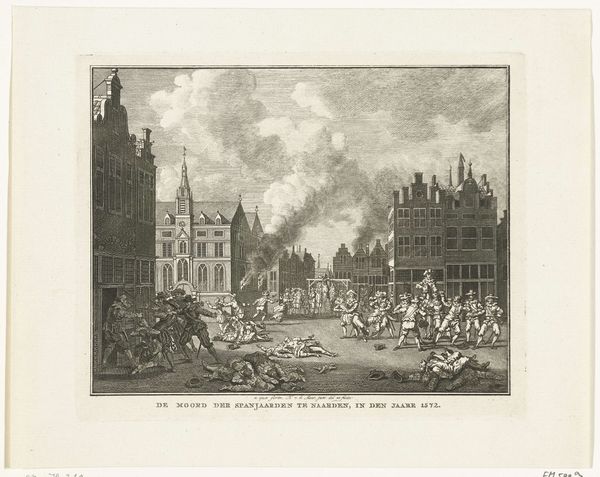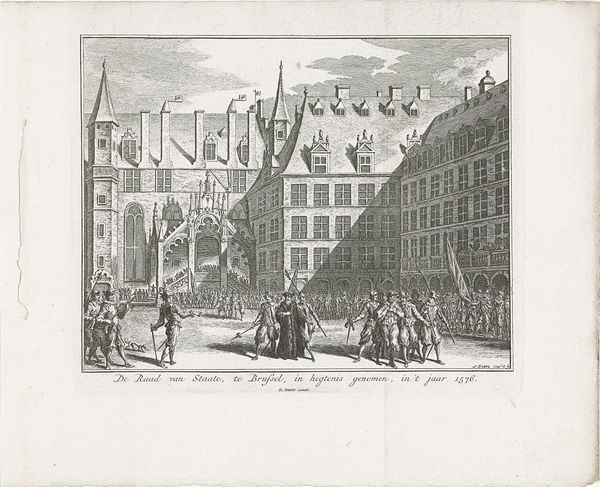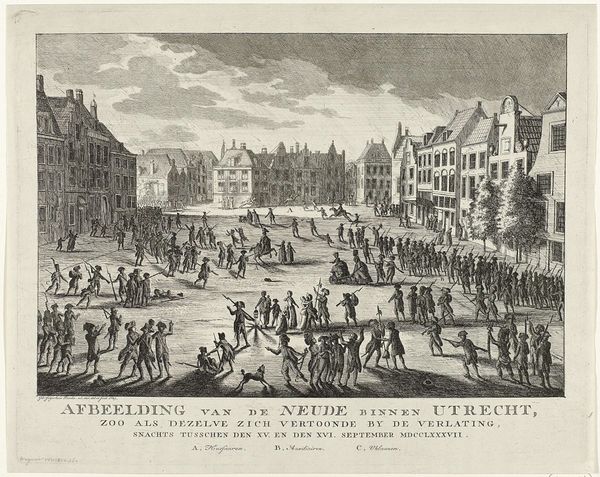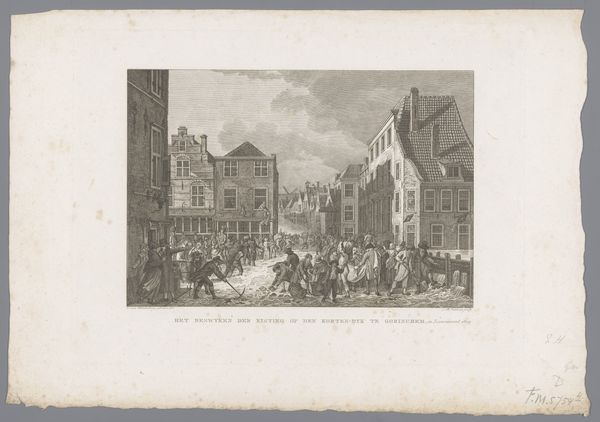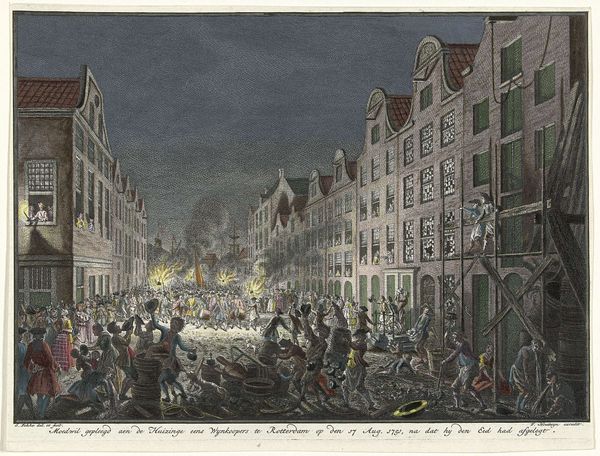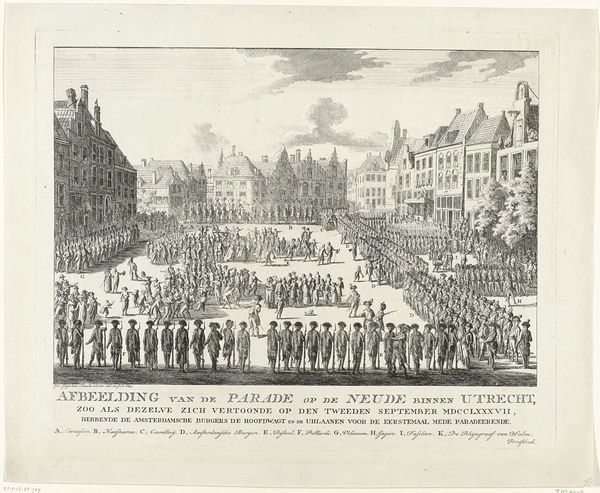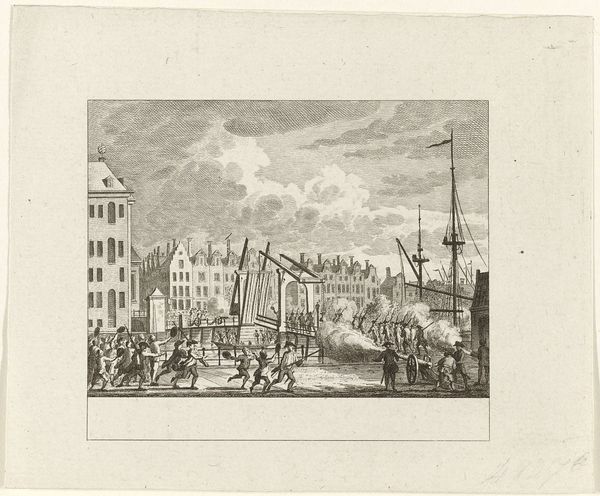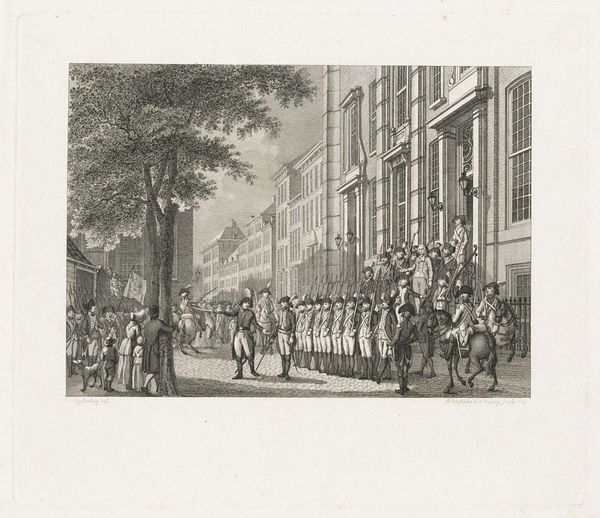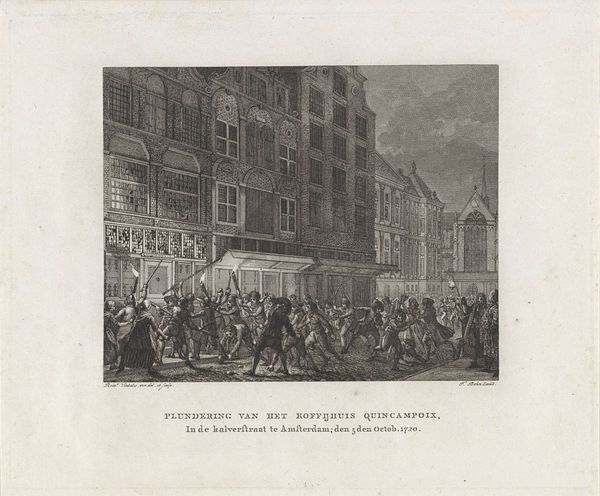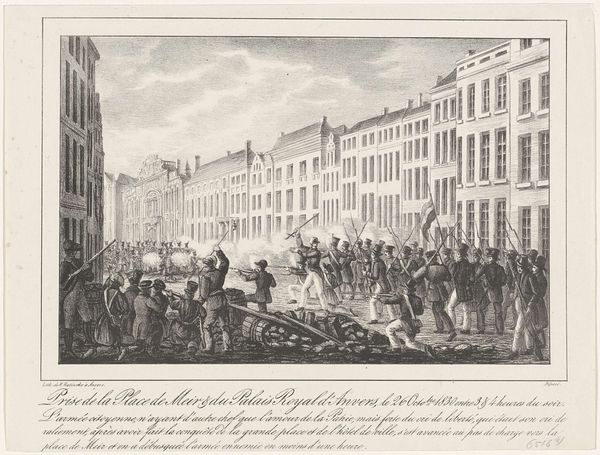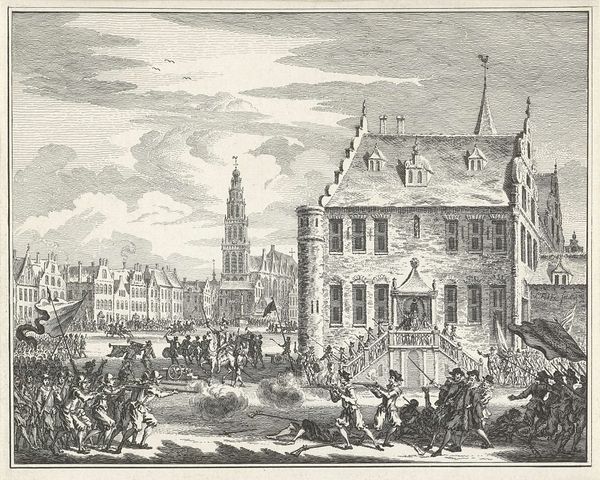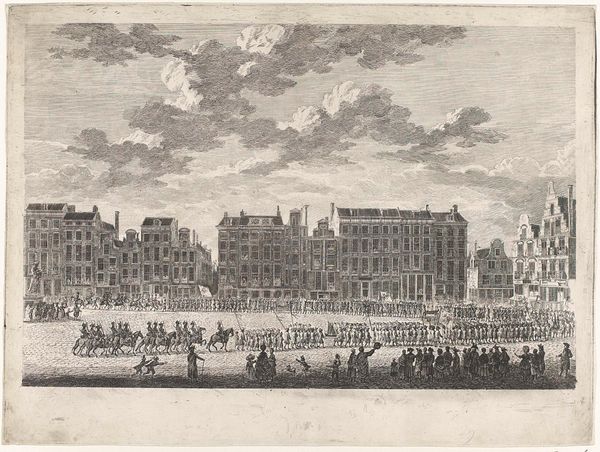
Plundering van het huis van een wijnkoper Gerrit Hagedooren te Rotterdam, 1751 1751
0:00
0:00
print, engraving
#
baroque
# print
#
old engraving style
#
cityscape
#
genre-painting
#
history-painting
#
engraving
Dimensions: height 165 mm, width 230 mm
Copyright: Rijks Museum: Open Domain
Curator: Simon Fokke's 1751 engraving, "Plundering van het huis van een wijnkoper Gerrit Hagedooren te Rotterdam," captures a turbulent scene. What are your immediate impressions? Editor: My eye is drawn to the texture and density of the crowd—you can almost hear the commotion despite the medium being a stark print. The darkness broken by scattered light gives it a dramatic feel. It also hints at the kind of labor required to make so many cuts on the block, a whole world of forgotten artistry. Curator: Indeed. This piece depicts an actual event, the riots in Rotterdam against tax collectors and wine merchants. These riots underscore the tension between the ruling elite and the common folk in 18th-century Netherlands. Fokke memorializes what the wealthy preferred to forget. Editor: So, this wasn’t just a spontaneous outburst? There’s something deeply unsettling in seeing this engraved and memorialized – the violence of production meeting actual violence in the streets. Look at the ladders—were they truly climbing there, risking bodily harm, for the sake of property destruction? What kind of material circumstances fueled this frenzy? Curator: It was fueled by deep socio-economic resentment, to be sure. Engravings like these had a real political role; they spread information and helped to shape public opinion. The print serves as both a record and a warning. It showcases collective power when mobilized around shared grievance, which inevitably has class undertones. Editor: It’s also fascinating to consider how the print medium itself affected that dissemination. Here's the material making a statement of material action! Were these mass-produced? To be available at all would signal this isn’t for the eyes of only the ruling class. This changes my perspective completely. Curator: Precisely. The ability to reproduce and circulate images democratized access to information, bypassing the filters of official channels. It offered visual testimony available for the scrutiny of the burgeoning public sphere, solidifying a sense of shared narrative and common cause for political or personal ends. Editor: It's a striking combination of artistry, reportage, and perhaps even incitement. Looking closer now at details, the people, the material tools... you realize you are seeing a confluence of complex networks laid bare by very calculated acts. Curator: Fokke’s work, then, transcends simple historical record. It serves as a stark reminder of the fragility of social order and the potency of collective dissent when the processes that shape it can be called into question. Editor: Ultimately a testimony, both a material one and a sociopolitical one, to the inherent turbulence that rests just under the surface of established structure.
Comments
No comments
Be the first to comment and join the conversation on the ultimate creative platform.
